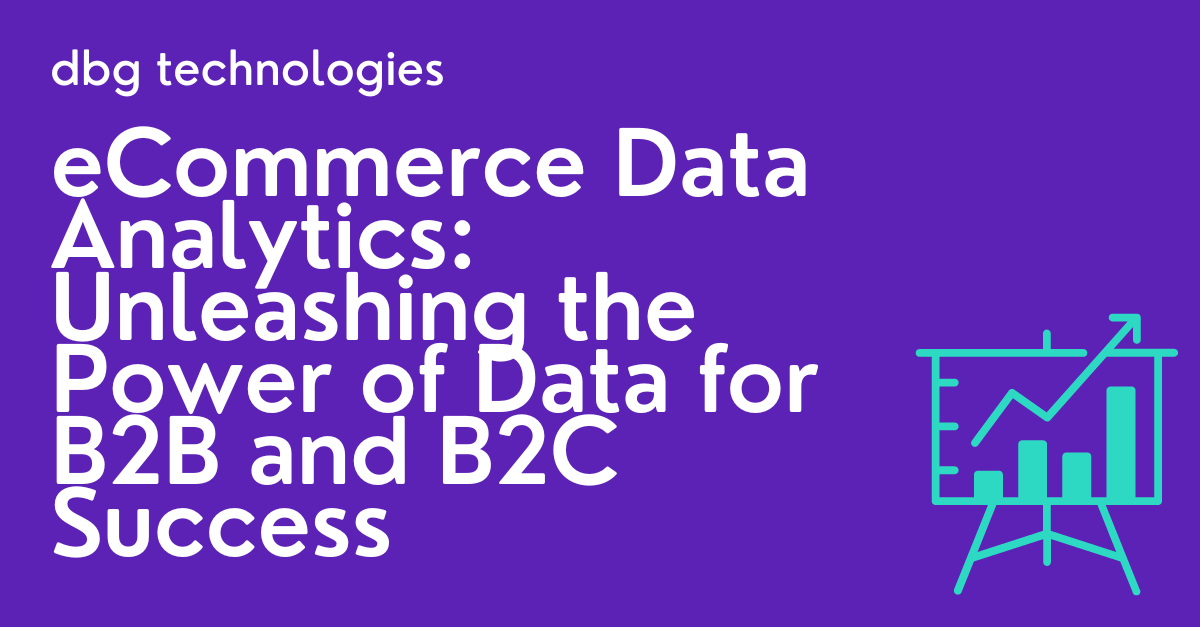 Data plays a crucial role in driving success for both B2B and B2C eCommerce businesses. By harnessing the power of eCommerce data analytics, companies can gain valuable insights into customer behaviour, make informed business decisions, and optimise their operations to stay ahead of the competition.
Data plays a crucial role in driving success for both B2B and B2C eCommerce businesses. By harnessing the power of eCommerce data analytics, companies can gain valuable insights into customer behaviour, make informed business decisions, and optimise their operations to stay ahead of the competition.
The Value of Data Analytics in eCommerce
Data analytics serves as a powerful tool that enables eCommerce businesses to make sense of the vast amount of data generated from various sources, such as website interactions, customer transactions, and marketing campaigns.
By leveraging data analytics, companies can:
a. Understand Customer Behaviour: eCommerce data analytics provides valuable insights into customer preferences, browsing patterns, purchase history, and demographics. This information allows businesses to tailor their marketing efforts, personalise customer experiences, and offer relevant product recommendations.
b. Optimise Pricing and Inventory Management: By analysing sales data and market trends, eCommerce businesses can optimise pricing strategies and inventory management. Data analytics helps identify product demand patterns, pricing thresholds, and sales forecasting, enabling businesses to maximise revenue and minimise stockouts or overstocking.
c. Enhance Marketing Effectiveness: Data analytics enables businesses to measure the performance of marketing campaigns, track key metrics such as conversion rates and customer acquisition costs, and identify the most effective marketing channels. This insight enables companies to allocate their marketing budgets more efficiently and optimise their campaigns for better results.
Key Data Analytics Techniques for ECommerce Success:
a. Segmentation and Personalisation: By segmenting customers based on their preferences, purchasing behavior, and demographics, businesses can create targeted marketing campaigns and personalized experiences. Data analytics helps identify high-value customer segments, allowing businesses to tailor their offerings to specific audiences and enhance customer engagement.
b. Customer Lifetime Value (CLV) Analysis: CLV analysis helps businesses determine the long-term value of their customers, considering factors such as repeat purchases, average order value, and customer loyalty. By understanding CLV, businesses can focus their efforts on acquiring and retaining high-value customers, thereby maximising profitability.
c. Funnel Analysis: Funnel analysis involves tracking and analysing the various stages of the customer journey, from initial site visit to final purchase. By identifying bottlenecks or areas of drop-off in the funnel, businesses can optimise their website design, user experience, and marketing strategies to improve conversion rates and drive more sales.
d. Predictive Analytics: Predictive analytics uses historical data and statistical models to make predictions about future customer behaviour, such as purchase likelihood, product preferences, or customer churn. By leveraging predictive analytics, businesses can anticipate customer needs, personalise offers, and proactively address potential issues, ultimately increasing customer satisfaction and retention.
Overcomings Challenges and Ensuring Data Privacy
While eCommerce data analytics presents numerous opportunities, businesses must also address challenges and ensure data privacy. It is crucial to comply with relevant privacy regulations, such as Australia’s Privacy Act, by implementing robust security measures and obtaining proper consent from customers. Additionally, investing in data analytics platforms and skilled personnel can help businesses effectively collect, analyse, and interpret data to drive actionable insights.
eCommerce data analytics has become an indispensable asset for B2B and B2C businesses in Australia, empowering them to gain a competitive edge, enhance customer experiences, optimise operations, and drive revenue growth. By leveraging the power of data analytics, businesses can unlock valuable insights that lead to informed decision-making and strategic planning.
